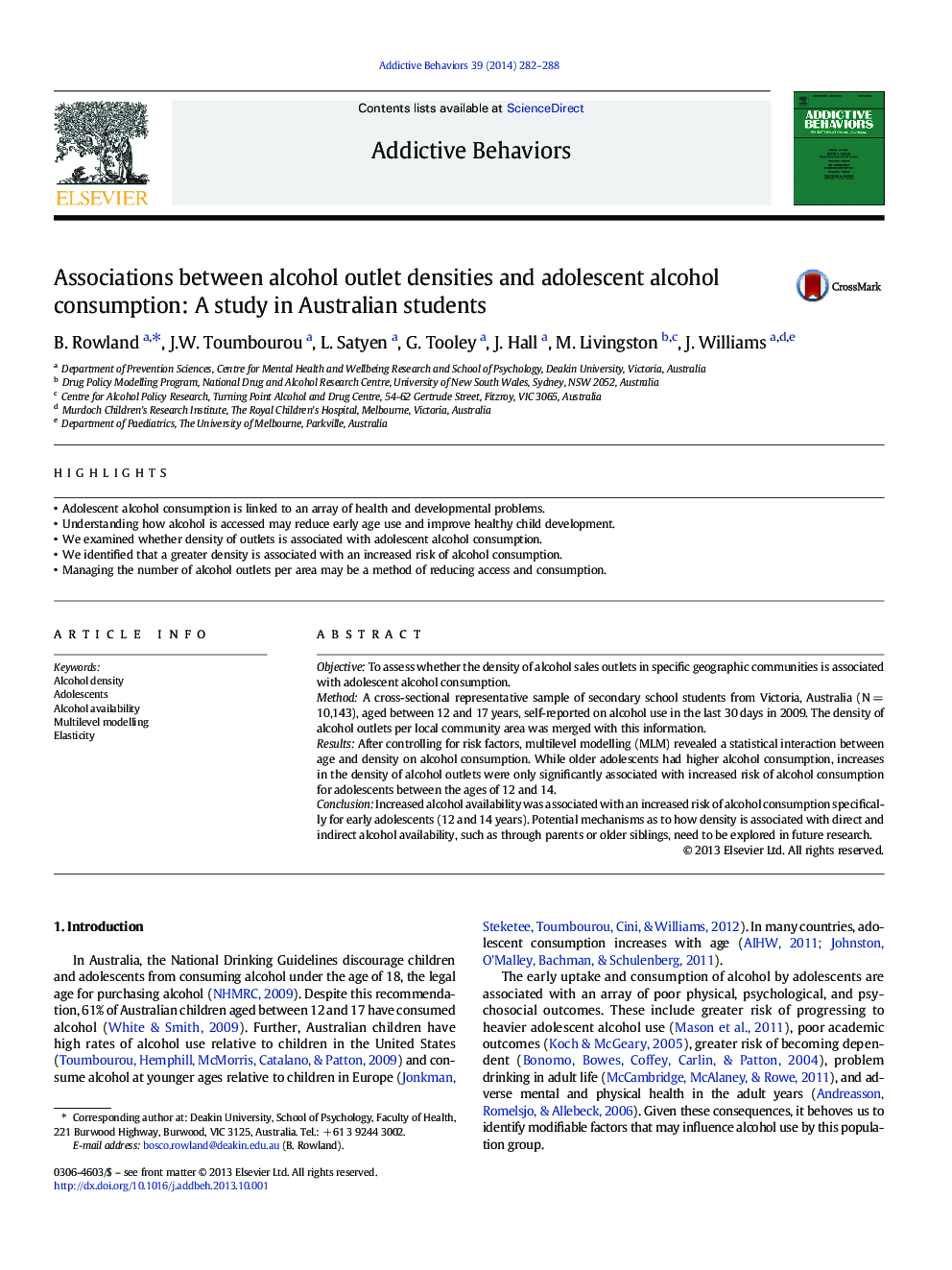| Article ID | Journal | Published Year | Pages | File Type |
|---|---|---|---|---|
| 899005 | Addictive Behaviors | 2014 | 7 Pages |
•Adolescent alcohol consumption is linked to an array of health and developmental problems.•Understanding how alcohol is accessed may reduce early age use and improve healthy child development.•We examined whether density of outlets is associated with adolescent alcohol consumption.•We identified that a greater density is associated with an increased risk of alcohol consumption.•Managing the number of alcohol outlets per area may be a method of reducing access and consumption.
ObjectiveTo assess whether the density of alcohol sales outlets in specific geographic communities is associated with adolescent alcohol consumption.MethodA cross-sectional representative sample of secondary school students from Victoria, Australia (N = 10,143), aged between 12 and 17 years, self-reported on alcohol use in the last 30 days in 2009. The density of alcohol outlets per local community area was merged with this information.ResultsAfter controlling for risk factors, multilevel modelling (MLM) revealed a statistical interaction between age and density on alcohol consumption. While older adolescents had higher alcohol consumption, increases in the density of alcohol outlets were only significantly associated with increased risk of alcohol consumption for adolescents between the ages of 12 and 14.ConclusionIncreased alcohol availability was associated with an increased risk of alcohol consumption specifically for early adolescents (12 and 14 years). Potential mechanisms as to how density is associated with direct and indirect alcohol availability, such as through parents or older siblings, need to be explored in future research.
